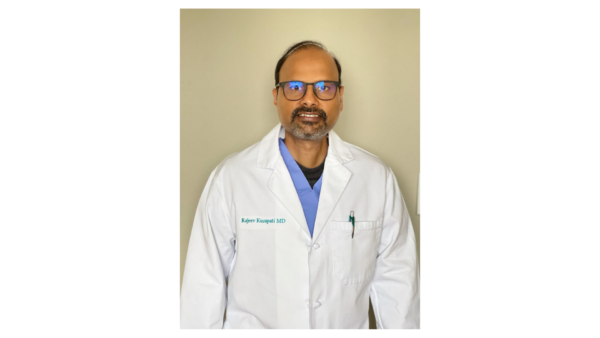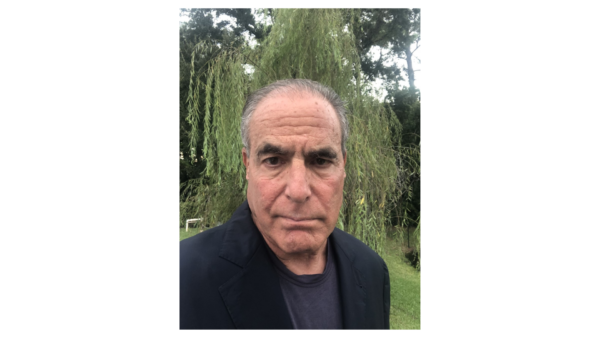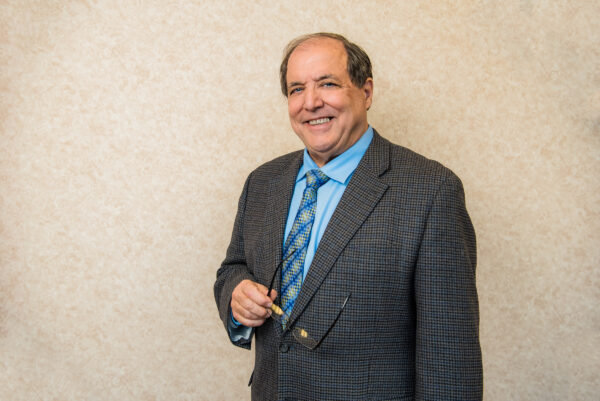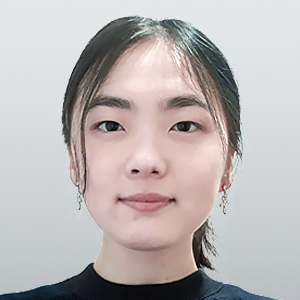“[The doctors] just see the disease, not me as a person,” a diabetic patient lamented to Dr. Rajeev Kurapati, Medical Director of Integrative Oncology and Hospitality at St. Elizabeth Healthcare in Kentucky.
The patient, alias Walter, had been in the hospital for a few weeks from complications of diabetes, including kidney failure, infections in his lower limbs, and near blindness from problems in his nerves.
Apart from Kurapati, Walter had many medical specialists to tackle each of his symptoms. This included a cardiologist, a nephrologist, and an infection specialist.

Initially admitted to the hospital as a rather pleasant man in his middle ages, Walter was soon leached of his charms as insomnia—another complication of his chronic disease—emerged and became another contending ailment.
Walter soon became anxious and desperate from not being able to sleep, so a psychiatrist was arranged for his suffering mental health, yet his insomnia persisted.
Kurapati’s book titled “Physician: How Science Transformed the Art of Medicine,” set the scene on current hospital medicine by starting the first chapter with this patient.
Kurapati’s book was based on a phenomenon he observed as he advanced in his medical practice. He discovered that doctors, fixating on the objective aspect of medicine, often place more emphasis on the treatment, thinking that this will heal the patient and make them better.
Yet healing and recovery are separate, and healing can therefore happen without physical recovery.
Therefore, a fixation on treatment can lead to physicians neglecting the focus of medicine, which is the patient.
This phenomenon has been observed and cautioned against by many physicians, with many asserting that treating patients “as disease” could compromise patient care.
While there are many drivers behind this problem, many doctors including Kurapati identified modern science to be an underlying factor, specifically an overemphasis of modern science in the medical field.
Doctors have also become busier, only able to allocate a few minutes to each patient as more time is spent charting. For the doctors who want to be present for their patients, practicing personalized medicine, many rarely have the time and the energy to, weighed down by requirements and protocols set by the hospital administration.
However, it hasn’t always been this way.
In fact, dialing time back to over a decade, over half of the doctors in the United States owned their own private practice.
A report published by The Physician Foundation in 2008 found that over 60 percent of doctors owned their practice rather than being employed (pdf). These doctors were their own CEOs, planned the day as they saw fit and, most importantly, allocated time and energy for the patients returning to their clinic. The American Medical Association’s 2020 Physician Practice Benchmark Survey shows just 49 percent of physicians own their practices today, a continuation of this downward trend.
With federal policies favoring large hospital systems, bedside manners and patient diagnosis took a backseat to medical data analysis.
The art of medicine, once based on the sacred bond between a patient and a physician, has gradually lost its importance.
Evidence-Based Medicine in the Name of Science
According to Dr. Richard Amerling, internist, nephrologist, and the Chief Academic Officer of The Wellness Company, evidence-based science is a key driver to the current hospital-based modern medical system.

Kicked off by the Flexner Report (pdf), a report titled “Medical Education in the United States and Canada,” by Abraham Flexner, evidence-based medicine is based on science methodology and was introduced in the early 1900s, and kick-started the current modern medicine as we know now.
This report, evaluating medical education in North America, was groundbreaking to the very structure and curriculum of medical education.
The author Flexner, however, was “an unemployed former owner of a prep school…sporting neither a medical degree nor any other advanced degree,” wrote the late economist Murray Rothbard.
“Flexner’s only qualification for this job was to be the brother of the powerful Dr. Simon Flexner, indeed a physician and head of the Rockefeller Institute for Medical Research.”
He was commissioned by John D. Rockefeller of Standard Oils, and the Carnegie Foundation, founded by billionaire Andrew Carnegie. The work was supported by Carnegie, J.P. Morgan, and John D. Rockefeller of Standard Oils.
Flexner visited 155 medical schools evaluating their performance; he conducted no questionnaires, but made the decision based on his own standards, which was based on the German medical system.
Flexner separated medical teachings into three eras: He deemed the first era to be the era of Hippocrates and Galen, where practitioners focused on the philosophical dogmas. The second era began from the 16th century, when anatomy was introduced into medical teachings.
Flexner concluded that the third era—the era at the time—was one where “medicine is part and parcel of modern science. The human body belongs to the animal world.”
The report encouraged more prerequisites to medical schooling, and a focus in curriculum on the scientific model in medical teaching, namely scientific methodology, hypotheses, and so on.
He also recommended university hospitals to be established, thereby combining research into clinical practice.
He labelled osteopathic, chiropractic, eclectic, naturopathic, and homeopathic medicine as “quackery” as these medicines focused on a holistic view of medicine and thus their “success” could not be measured through experiments, and was therefore unsuited for the scientific methodology model.
Holistic medicine for the next 110 years became the alternative to mainstream modern medicine.
Flexner also encouraged standardization of medical training. While this reduced the number of poorly trained physicians, it also homogenized doctors.
Schools that taught what is known now as “alternative medicine” could not adjust to the model and closed down—of the 155 schools Flexner reviewed, only 85 remained open.
However, a fundamental change this report brought about was the change in thinking about health.
The biomedical model teaches health to be “the absence of disease,” rather than the traditional understanding of the body as being in a state of “homeostasis,” or balance.
While the actual definition of health varies between doctors, the restrictive biomedical model directly contributes to medical teaching restricting doctors to treating diseases and symptoms rather than working on patients to make them better holistically through preventative medicine.
Arguably, this biomedical disease model meant that doctors could no longer make their patients healthier as a whole; this role was soon filled in by public health instead.
William Osler, known as one of the fathers of modern American medicine, opposed this medicine.
“Osler essentially rejected the Flexner report,” wrote Dr. Alfred I. Tauber, Professor of Philosophy Emeritus at Boston University, widely published in scientific epistemology and medical ethics, in a 1992 report. “In his view, researchers should be in research institutions and not corrupt the clinical interaction.”
Osler believed medical students would be distracted from treating patients and focus on research and laboratory work instead. He was not against the scientific objectivity being applied to medicine, but was concerned that the very ethos of a evidence-based medicine introduces detachment between the clinician and the object of study—the patient.
Nevertheless, Osler and other doctors of the time who shared the same opinion would ultimately lose against evidence-based medicine.
In the following decades, evidence-based medicine birthed randomized controlled trials, population studies, and a focus on prescriptions. These three aspects formed the basis of western allopathic medicine as we have come to know.
Randomized control trials are experiments where all outside factors are kept the same except one variable. An example would be getting human cells from the same patient, leaving them in the exact same environment, but only changing the nutrient provided.
Though these trials help to separate all external factors and allow researchers to understand the function of an organ, tissue, or chemical in isolation, human bodies do not work in isolation. They work with a complex of organs, tissues, and chemicals.
“But then when you put all that together, you [academics] forget to bring all the variables back into the picture,” Kurapati said. While the study was done in isolation, the human body works in multi-dimensions, and, therefore, randomized controlled trials contribute to a reductionist vision on medicine.
Population trials, as the name suggests, are experiments and studies on a large group of people that are supposed to be representative of the population. The people recruited will have varying ages, races, health, and so on, and the statistical findings of these studies form the hospital protocols and guidelines.
Evidence-based medicine also contributed to the promotion of institutionalized hospitals, with independent private medical practices squeezed out of the market by federal policies, biased towards the corporate and big data model.
A 2021 report (pdf) showed that nearly 70 percent of doctors were now employed in hospitals, demonstrative of what the Physicians Advocacy Institute called the “tragedy” in the United State’s “loss of the independent private doctor.”
As hospital employees, doctors need to follow hospital guidelines, their schedules are planned by the administration, and they therefore have less control of their time.
Yet the guidelines stem from big data, and “a human being is not a statistic,” said Kurapati. “An individual is not representative of the population; he or she comes with his own very specific characteristics. So doctors lose that perspective; individual or personal medicine takes a hit.”
It is because of these damaging consequences to the patient-physician relationship—and to the patient’s health—that Amerling argues that evidence-based medicine is not scientific, but a gateway ticket to Big Pharma.
“Evidence is not science, evidence is just a component of the scientific method. We look at evidence, but we apply thought, reason, and logic to the evidence to come up with reasonable hypotheses, but evidence itself is meaningless. You can literally produce evidence or find evidence to support any hypothesis. So just evidence-based medicine is, on its face, a ridiculous concept. Medicine has to be science-based.”

Doctors Treating the Numbers
The product of such population studies and randomized controlled trials are hospital standards, treatment guidelines, and prescription dosages that are being taught to students, rather than skills and the ability to think and work as a doctor, Amerling said.
In recent decades, Amerling, who was an associate professor at St. George’s University up until 2021, noticed that there has been a downward trend on the training of medical students in patient and doctor interactions.
He observed that students are not being trained on taking a patient’s history, which is a series of questions doctors will ask to assess and determine the condition; instead, they are given a set of questions anyone could ask, and a diagnosis is somehow derived from this questionnaire.
“When you’re taking a history with a patient … You have to ask a very specific group of questions in a very certain order to arrive at a diagnosis because you want to get the patient to tell you in more detail what they’re experiencing, and you apply the answers to what you know to be from your studies, [and] clinical presentation of different disease states … it’s actually an intellectual exercise that requires some brain power,” Amerling said.
However, his greatest concern is that there has been reduced focus on teachings and understandings of the basic fundamental sciences.
“There’s less and less emphasis on the basic sciences, such as … physiology, biochemistry, pathophysiology, pathology [in medical schools].”
Without an inherent understanding of disease processes and human physiology, doctors cannot intervene at the fundamental level to cure illnesses. Patients are therefore in a state of chronic disease.
“The understanding of these core courses frees you up to be able to think for yourself—if you have only a rudimentary understanding of this material, you are not going to be able to go outside the box and think around a new problem.”
Amerling gave the example of type 2 diabetes, which has become a growing problem in the United States. Most doctors understand type 2 diabetes as incurable, however many studies have shown that weight loss and diet can reverse the condition.
“Diabetes is largely a disease of an oversupply of energy in the form of carbohydrates, glucose, and certain vegetable oil and fats; when you modify the diet to get rid of these [overconsumption of sugars] … you actually reverse their diabetes and make them well again.”
Without this understanding, doctors will only treat the numbers—high blood sugar levels—by giving patients treatments that help with insulin signaling.
In type 2 diabetes, patients’ muscle, fat, and liver cells lose the ability to take in sugar from the blood due to impaired insulin signaling, resulting in a high blood sugar level. Some type 2 diabetic patients are given extra insulin to control their blood sugar levels. This forces the uptake of blood sugar into the cells, and therefore decreases blood sugar levels, but can also cause cells to take in more blood sugar than they need.
“[Doctors] think that they’ve succeeded when they get the number down, when in fact, they’ve made the patient worse because what they’ve done is they’ve forced glucose from their blood into the cells in their body, making them [the cells] overstuffed with energy,” said Amerling.
In the past, insulin therapy was often prescribed as a last resort. However, in recent years, insulin prescriptions for type 2 diabetes have increased.
Patients therefore gain more weight from the sugar being pumped into their cells, and their metabolic disease worsens, progressing into complications of diabetes including blindness, kidney failure, nerve problems, and even death.
“If you have an approach that is outside that box [and] based on the path of pathophysiology of the disease, then you can actually cure them, and it’s not that hard to do.”
The numbers-based treatment can also make doctors see different symptoms as separate and unlinked problems, often causing more harm than good.
Hypertension (high blood pressure) and type 2 diabetes often come together, but when presented in charts, doctors see them as two different numbers and two different problems to treat, even though both conditions are “inextricably linked,” said Amerling.
“Certain things raise blood pressure: stress, certain hormones will drive up blood pressure, right? Dietary changes drive up blood pressure … most high blood pressure these days is due to overconsumption of sugar and carbohydrates.”
“Virtually all the patients that I see with type 2 diabetes also have hypertension. They tell me that it started at around the same time which suggests that this is a common disease process causing both problems, but most doctors don’t look at it that way. Most doctors look at it as two separate problems, two numbers to treat.”
This number-based treatment has restricted doctors to spending more time on their charts than with their patients, often spending 20 minutes at the statistics, and less than 10 minutes caring for patients.
Not only do numbers give a restrictive illustration of the disease, a focus on numbers dehumanizes the patient and their experiences.
“When you want to have statistics … the only way to do it is to objectify the human body by any means,” said Kurapati.
“For instance, pain is a feeling. How do you objectify it? By giving a number to it, so by giving a number to it, what happens is you have reduced that feeling into a number and now you have something to play with it. Then there are the pharmaceuticals that come and say I can bring down this number from eight to six … so on and so forth.”
Patient’s concerns also become easily dismissed when doctors are focused solely on bringing down their numbers, as concerns, worries, beliefs, are all things that cannot be quantified, and the new doctors are not taught nor familiarized with dealing with subjectivity.
With doctors not treating the disease but the numbers, and human interactions being reduced to objective numbers where possible, it is therefore unsurprising that the United States have been in a state of stagnating health.
Despite being a leading country in its medical technology, the United States has rarely been featured in the top 30 countries for life expectancies. While developed countries such as Japan, Australia, Switzerland, and many others easily maintain a life expectancy in the 80s range, the United States has continued to struggle at the 79 mark.

How COVID-19 Exposed the Limitations of Modern Medicine
The two year pandemic blew the inherent problems of the modern medical systems out into the open.
Kurapati said that COVID-19 showed that the developed countries, namely the United States, Italy, France—countries that prided themselves on having advanced technologies—exposed their poor public health.
According to the World Health Organization, the United States had some of the highest death rates with around 317 deaths per 100,000 people, Italy had 297 per 100,000, and France had a death rate of 233 per 100,000.
Compare this to India which has a high case rate but only suffered 38 deaths per 100,000 and Malaysia which has a death rate of around 112 per 100,000 people.
“People with so many comorbidities such as obesity [suffered and died], COVID takes the most advantage of [obesity] and causes the most damage,” said Kurapati.
Apart from shortfalls in public health, Amerling argued that the COVID-19 pandemic has exposed the over-dependence and over-confidence doctors had for guidelines and standardizations.
Renowned internist and oncologist, Dr. Stephen Iacoboni said that the modern doctor is similar to a pilot—it is a stressful job as one is responsible for the life and death of the passengers, but the job of a pilot, unlike that of a doctor, is highly controlled by the mechanisms of the aircraft.
Doctors have thus developed ways to manage this stress.

“One of the ways to make it possible for you to cope with the responsibility and the uncertainty is to create in your mind a sense of great certainty that there is really only one way to do this,” said Iacoboni.
“[Doctors] need that over-confidence in order to function, and so when uncertainty really rears its head during the COVID epidemic when no one knew what was going on, most doctors retreated into their little cubby holes of certainty, and said there’s only one way to do this and that’s to follow the guidelines.”
He and Amerling shared the opinion that years of medical training have turned many doctors into technicians who could not function without guidelines and standards.
“Doctors, for the most part, abandoned them [their patients] during the early days of the COVID crisis, because they couldn’t think for themselves and they were following the guidelines,” said Amerling.
Health authorities across the globe recommended no early treatment for most of the pandemic, only recommending infected patients to admit themselves to the hospital when they could not breathe.
“This is awful advice. No doctor, self respecting doctor, ethical physician should have ever followed that advice. They should have taken care of their patients, figured out something and some did … lots of doctors figured out how to treat patients.”
Renowned cardiologist and internist Dr. Peter McCullough led a paper on the pathophysiologic approach to the disease in August 2020.
Amerling said that McCullough’s paper was one of the most downloaded studies. McCullough and the many other doctors did what doctors were supposed to do—research and find treatments.
“Most of the doctors did nothing and it destroyed their brand. I think they’ve created a huge void in medicine that hopefully we’re going to be trying to fill.”

Medicine for the Future
Modern medicine has helped doctors to treat patients, lengthening their lifespan and improving their quality of life.
Yet, with medical technology in the form of big data and artificial intelligence, the role and importance of doctors are being replaced with artificial intelligence, already in scans and examinations.
But as Professor Kristin Collier from the University of Michigan said at the university’s 2022 whitecoats ceremony, “robots can often be more accurate than we are with diagnostics … [but] machines and robots can’t care for anyone, task completion is not care.”
The focus on numbers, treatment, trying to fix the human body as a machine rather than a human, have all left a void in patient care, something that was once honored as the fundamental art of medicine.
The bond between patients and their doctors is one of the most sacred bonds. Historically doctors were taught bedside manners, knew the healing and comforting ability they had and exercised it.
“A good doctor makes the patient feel better without doing anything, just by being present,” said Amerling, “When a patient perceives that a doctor is actually caring about them. They actually start to improve physically [and] emotionally for sure.”
And with machines and robots becoming better at task completion in the medical field, the role of physicians as a healer, their “training on bedside manners, that humanistic dimension, that training has to happen more now in medical schools than ever,” said Kurapati.
“The human body is more like a garden than a machine,” said Kurapati. “Unlike machines where there are fixed parts that you take out and replace, [the body] is changing season by season … There is always growth and decay.”
Iacoboni encouraged a focus away from mechanistic-based medicine that sees the patient as a machine and therefore the one treating the patient as a mechanic.
Amerling called for a rebuilding of the medical system where healing and treatment are integrated.
“You have to start from scratch and go back to the basics of medicine and rediscover what medicine used to be,” Amerling said.
“I don’t think that any of them [doctors] are happy doing the treat-by-numbers approach,” he said.
Since doctors are only controlling the numbers and not improving and curing their disease, “It’s very unsatisfying, because you’re not really making anyone well. You’re just maintaining them in a state of chronic illness.”
“Real medicine is fun, when you get someone who’s a type 2 diabetic with complications, and you get them off their insulin … to reverse their type 2 diabetes, that’s fun. That is really rewarding, and that’s what medicine should be.”
Source link



